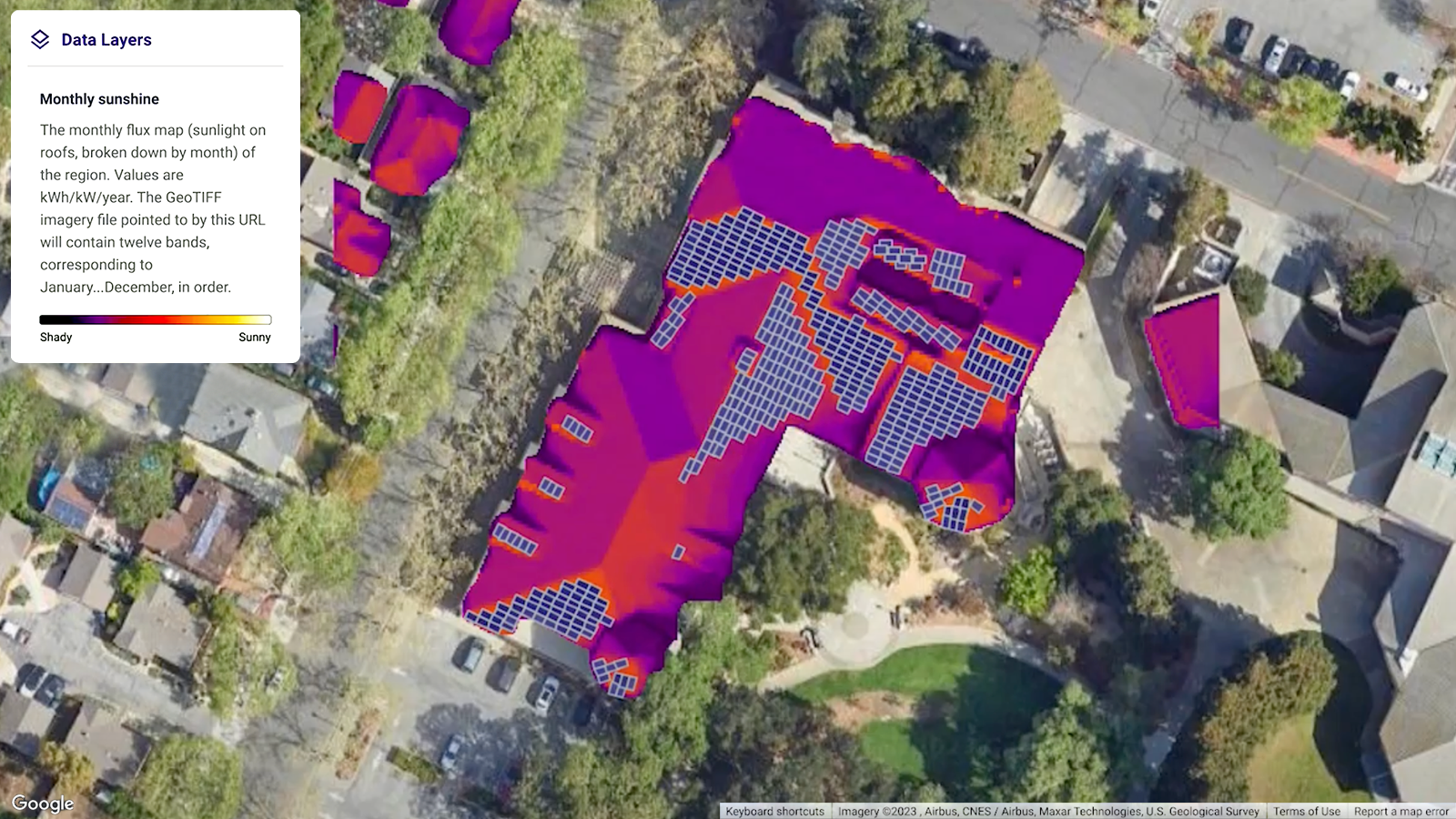
Most temperate places get 4.5 to 5 peak sun hours, averaged over the year. So your consumption is around 850 kWh per month = ~30 kilowatts per day, and you have four to five hours to produce that much energy. So, if things are 100% efficient, you will need to produce 6.3 kW per hour, but things were never 100% efficient, thanks to dust, weather conditions, tree shading, and other factors. So assuming 70% efficiency, you will need to plan for production capacity of 9 kW.
Typical solar panel outputs between 250 watts and 400 watts, so you will need around 30 panels.
Each panel is around 1.5 sq meters, so you will need around 45 sq m of roof space – south-facing for maximum benefit.
This is probably a tad too big – considering two row array of 3’ x 5’ panels, the optimal size is at 10’ x 45’ spread across the roof (ignoring the non-south-facing side).
Probably, ~5 kW is sufficient, which reduces the array to 18 panels and 25 sq m – or 10’ x 27’ spread on the roof. Such an array should be able to run two air-condition units, fridge, other household appliances and lights.
Assuming your house’s electricity cost at 25 cents / kWh
A 5 kW array can probably save you ~480 kW of electricity use per month or ~120 dollars per month
A 5 kW array costs around 6000 USD currently, and there will be routine repairs and maintenance thereafter.
The solar panels for home use would breakeven after only ~4 years (not taking into account repairs). A typical payback period for residential solar is 7-8 years, taking into account average utility rates, incentives, system size, and other factors.
Levelized cost of energy takes into account operating and maintenance cost of solar – and for residential rooftops, it ranges from USD 180 to USD 300 per MWh. For C&I and community (e.g. farm level) projects, LCOEs are lower:
 In 2014, Google launched a team launch Project Sunroof- an incredibly useful tool that uses Google Maps data to calculate how much sunlight a building receives and estimates how much solar energy it could generate.
In 2014, Google launched a team launch Project Sunroof- an incredibly useful tool that uses Google Maps data to calculate how much sunlight a building receives and estimates how much solar energy it could generate. 